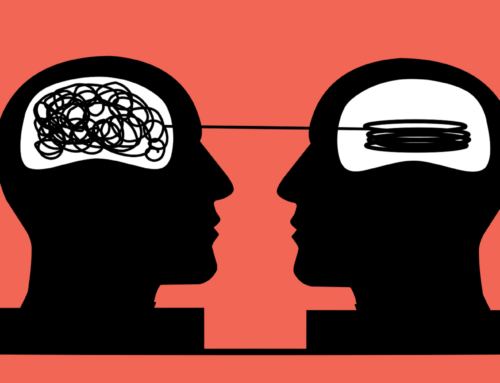Anxiety and ADHD are very different, but sometimes the symptoms can look similar. The correct diagnosis is critical to guide treatment and to make sense of things when kids seem to be struggling or when something doesn’t feel quite right. As much as the right diagnosis can heal, the wrong one can also harm. Understanding how anxiety might look like ADHD, and the telltale differences between the two, can make an important difference in avoiding a misdiagnosis, and helping kids deal with the symptoms that might be getting in their way.
ADHD is one of the most diagnosed childhood conditions, and it seems to be increasing. The Centre for Disease Control reports that 11% of children between 4-17 have been diagnosed with ADHD at some point in their lives. Reports suggest that about 8% currently have ADHD and about 6% are taking medication. The prescription of medications for ADHD has increased by 800% in the last two decades.
ADHD has been the firestarter for plenty of hearty debate, with some questioning whether or not it actually exists. Let’s start by putting that argument to bed, or somewhere less cosy and far away so it won’t find its way back. ADHD absolutely does exist, and there are pictures to prove it. Brain imaging shows definite differences between a brain with ADHD and a brain without.
Researchers don’t know exactly what causes ADHD, but they know for certain that it’s is a neurobiological condition. It has nothing to do with bad behaviour, bad parenting, too much sugar, not enough sleep, fairy dust, wearing too much yellow – or whatever other crazy theories are out there. Fortunately, these theories have been debunked, which means now researchers can get on with finding out what’s really going on, which they are.
Perhaps something that has given buoyancy to the ‘does it exist or doesn’t it’ debate is the overdiagnosis of ADHD, or the misdiagnosis of symptoms that look like ADHD. A major problem facing doctors and clinicians is that there is currently no widely available objective physiological assessment for the presence of ADHD. At the moment, brain imaging can’t be used for diagnosis, but researchers are working on developing a more accurate and objective diagnosis tool.
In the meantime, diagnosis relies on reports of the child’s behaviour from two different environments, typically school (from teachers) and home (from parents). If your child seems to struggle at school but seems fine at home, it’s not ADHD, and vice versa. Diagnosis of ADHD is based on a list of 18 possible symptoms, all of which exist on a spectrum, and all of which could apply to any child at some point in time. A formal diagnosis of ADHD comes down to a question of degree. To be diagnosed, a child has to have most of the symptoms most of the time, and they have to intrude significantly into day-to-day life.
Studies that have looked at the way ADHD is assessed by clinicians have found that a large majority of practicing clinicians did not regularly follow assessment procedures that are in line with best practice guidelines. One of these guidelines is to use multiple methods to diagnose but only 15% of clinicians reported doing this.
Research has also found that the youngest children in a year level are more likely to be diagnosed with ADHD and medicated than older children in the year level. Interestingly, this trend is only found with preschool and primary school (elementary) age children, not adolescents. Researchers suggest this may be because younger children, because of their age and stage of development, don’t quite yet have the neurocognitive development of their older classmates and may wrongly be diagnosed with ADHD.
Without a reliable objective measure of ADHD, there will inevitably be times when a cluster of behaviours in a child is labeled as ADHD, but isn’t. The key symptoms of ADHD – inattention, distraction, fidgeting, problems at school, problems focusing – don’t automatically mean ADHD. They can indicate several other conditions, one of which is anxiety.
The problem with misdiagnosis.
No parent wants their child to be diagnosed with ADHD. Understandably though, it can be a massive relief when there is finally an explanation for behaviours that don’t seem to make sense, or which are causing problems at school, at home and with friendships.
Having a correct diagnosis is vital. It can bring clarity and guide the management of symptoms in ways that see important parts of a child’s life (relationships, academics, behaviour, self-esteem) improving significantly. But as much as a diagnosis can heal, it can also harm. When a child is misdiagnosed, the fallout can be immense. Not only might the child be exposed to unnecessary medication, but the wrong diagnosis can mean that the child isn’t receiving the support or treatment that actually would help their symptoms.
Misdiagnosis can set a path for treatment that is unhelpful or detrimental, and it runs the risk of overlooking the true cause of any difficulties the child is having. Labeling a child with the wrong diagnosis also has the potential to shrink the expectations of teachers or other adults as to what that child is capable of. Children will live up to expectations or down to them. They’ll look to the important adults in their lives for clues about how hard they should try, and whether the reach is in them.
But then there’s the overlap.
The overlap between the symptoms of ADHD and other conditions can also add to the potential for misdiagnosis. As many as 75% of children with ADHD meet the criteria for another diagnosis. About a third of children who have ADHD will also have clinical levels of anxiety. The presence of anxiety seems to be related to more severe ADHD, so it’s massively important that the diagnostic process is open to this. If anxiety is present, it’s vital that it is given the attention it needs, and not overlooked or treated as part of the ADHD.
Read more: Anxiety or ADHD? Why They Sometimes Look the Same and How to Tell the Difference?







Leave A Comment